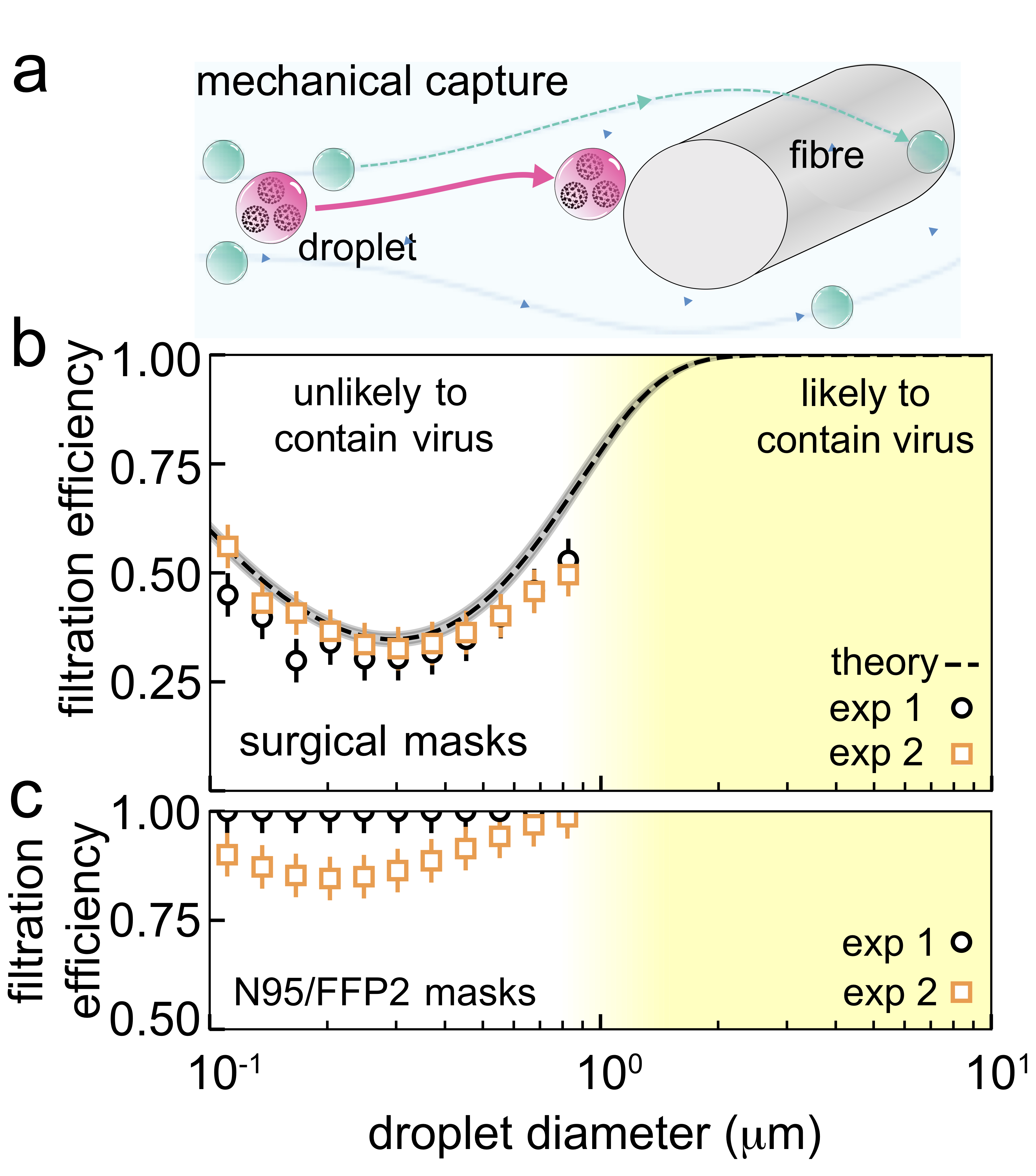Facemasks in COVID-19

Variation in facemask filtration efficiency with incoming particle size. (a) Schematic of capture of viral droplets by a fibre within a mask. Larger particles are more easily captured because they are less mobile; smaller aerosols by contrast are transported around the fibre by the gas flow. Larger particles can also carry more virions, and submicron aerosols are unlikely to contain even a single virion. The filtration efficiency of perfectly fitting (b) surgical masks and (c) N95/FFP2 masks are shown as a function of droplet size [6].
During the COVID–19 pandemic, with a collaborator working in public health, we studied the efficacy of facemasks from a soft matter perspective. While the basic science of filtration of droplets is understood, application to the parameters of airborne droplets had received little attention by March 2020. We took two approaches: firstly, an implemen- tation of the underlying theory in a setting appropriate to face coverings [1,2] and secondly, using confocal microscopy to obtain some of the first 3d images of facemasks [3]. Among the questions that we tackled in- cluded which type of mask we should wear in what situation. The three basic types: cot- ton, surgical, and respirators (eg FFP2, N95 and similar), are all essentially air filters worn on the face. Our model predicted that surgical masks are effective at reducing the risk of airborne transmission because their filtering material is highly effective for droplets with diameters around 1 μm. However, surgical masks are significantly less effective than masks of FFP2, N95 and similar standards, due to their poor fit [1,2].
- J. F. Robinson, I. Ríos de Anda, F. J. Moore, F. K. A. Gregson, J. P. Reid, L. Husain, R. P. Sear, and C. P. Royall, “How effective are face coverings in reducing transmission of covid-19?” Aerosol Sci. Tech. (2022). Link to paper and Link to ArXiV
- J. F. Robinson, I. Ríos de Anda, F. J. Moore, J. P. Reid, R. P. Sear, and C. P. Royall, “Efficacy of face coverings in reducing transmission of COVID-19: calculations based on models of droplet capture”, Phys. Fluids. 33 043112 (2021). Link to paper
- I. Ríos de Anda, J. W. Wilkins, J. F. Robinson, C. P. Royall, and R. P. Sear, “Modelling the filtration efficiency of a woven fabric: The role of multiple lengthscales,” Phys. Fluids. 103 033301 (2022). Link to paper